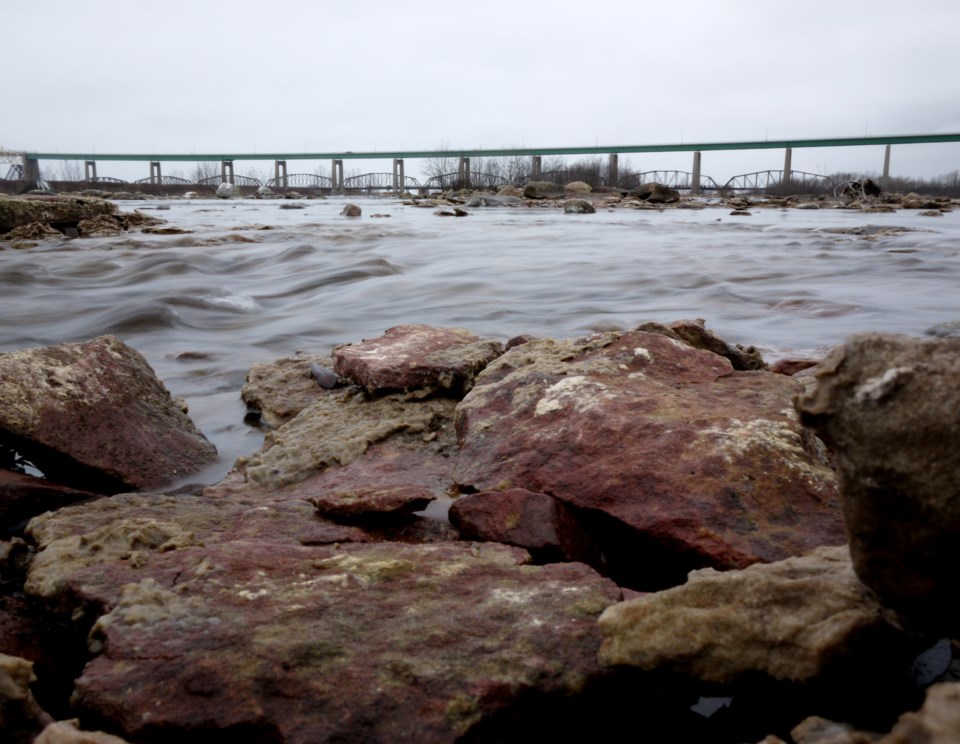Water levels on Lake Superior and Lake Michigan-Huron continue to be below the seasonal long-term average, and below last year's level.
That's according to the International Lake Superior Board of Control.
The board says the gate setting on the St. Marys River will be maintained at the typical winter gate setting.
Find the full news release from the board below:
The Board expects the total St. Marys River flow in February to be 1,690 m3/s (59,700 cfs), as prescribed by Regulation Plan 2012. Actual hour-to-hour and day-to-day flows may vary depending on hydrologic conditions, as well as variations in flow from the hydropower plants.
The gate setting of the Compensating Works will be maintained at the typical winter gate setting (Gate #1 and Gates #7 through #10 open 20 cm each) equivalent to approximately one-half gate open. Therefore, the average St. Marys Rapids flow in February is expected to be approximately 83 m3/s (2,900 cfs). Gate #1 will remain at its typical setting which supplies a flow of about 15 m3/s (500 cfs) to the channel north of the Fishery Remedial Dike.
Water level changes over the month of January
Water supply conditions were drier than average in both Lake Superior and Lake Michigan-Huron basins in January.
- Lake Superior declined by 8 cm (3.1 in) last month while the seasonal long-term average pattern is for Lake Superior to decline by 7 cm (2.8 in) in January.
- Lake Michigan-Huron declined by 9 cm (3.5 in) last month, while the seasonal long-term average pattern is for Lake Michigan-Huron to decline by 2 cm (0.8 in) in January.
Water levels as of the beginning of February
- At the beginning of February, the lake-wide average water level of Lake Superior was 16 cm (6.3 in) below the seasonal long-term average (1918-2023) and 14 cm (5.5 in) below the level of a year ago.
- At the beginning of February, the lake-wide average water level of Lake Michigan-Huron was 18 cm (7.1 in) below the seasonal long-term average (1918-2023) and 28 cm (11.0 in) below the level of a year ago.
Forecast outlook
Water level changes based on water supplies over the month of February.
- If weather and water supply conditions are near average, Lake Superior may decline by approximately 4 cm (1.6 in.) and Lake Michigan-Huron may decline by approximately 1 cm (0.4 in).
- If conditions are much wetter than average, Lake Superior may decline by approximately 1 cm (0.4 in) and Lake Michigan-Huron may rise by approximately 5 cm (2.0 in).
- If conditions are much drier than average, the water level of Lake Superior may drop by as much as 8 cm (3.1 in), and Lake Michigan-Huron may decrease by as much as 6 cm (2.4 in).
The International Lake Superior Board of Control is responsible for managing the control works on the St. Marys River and regulating the outflow from Lake Superior into Lake Michigan-Huron. Under any outflow regulation plan, the ability to regulate the flow through the St. Marys River does not mean that full control of the water levels of Lake Superior and Lake Michigan-Huron is possible. This is because the major factors affecting water supply to the Great Lakes (i.e. precipitation, evaporation, and runoff) cannot be controlled, and are difficult to accurately predict. Outflow management cannot eliminate the risk of extreme water levels from occurring during periods of severe weather and water supply conditions. Additional information can be found at the Board’s homepage: https://ijc.org/en/lsbc or on Facebook at: https://www.facebook.com/InternationalLakeSuperiorBoardOfControl
https://ijc.org/en/update-lake-superior-outflows-and-expected-conditions-february-2025



